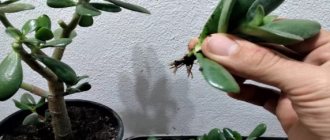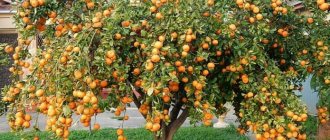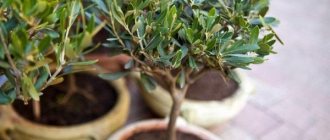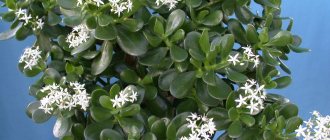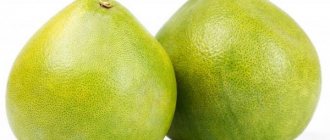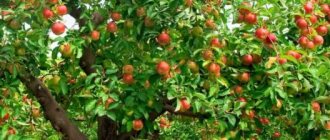Mango is an exotic tree that grows in countries with hot tropical climates. It has large long leaves of bright green color, blooms beautifully and bears fruit abundantly in natural conditions. In our country, it is impossible to grow a mango tree in open ground - it will die at the first frost. But mango can become a houseplant that decorates the interior.
The easiest way to grow a tree is from a sprout, which can be purchased at a nursery. However, it is also possible to use a seed from a fruit purchased at the supermarket. If you follow the planting procedure correctly and provide proper care, a beautiful tree will grow in a pot in a few years. In most cases, the plant does not bear fruit at home, but some exotic lovers still manage to get a small harvest.
Growing an exotic tree where to start
If you live in an area with similar climatic conditions where mango grows, then it will not be difficult for you to grow an exotic mango, in which case it will even bear fruit.
But if the climate where you live is not hot, and you harbor hopes of growing mangoes at home, then you will have to try to create suitable conditions for the plant. Moreover, if you take the matter seriously, you can grow quite an impressive tree, using a seed obtained from a store-bought fruit as planting material.
In nature, there are a large number of mango varieties that vary in size. When growing at home, the best option would be a low-growing tree, but, unfortunately, it is extremely difficult to determine the size of the future plant based on the size of the fruit.
If you decide to plant an exotic tree, then buy a small ripe fruit in the store; its seed will be suitable for your purpose.
Remember that our hero today is a tropical guest. There is no frost in its habitat, the climate is hot and humid. Therefore, to grow mangoes, you need to find a place where the tree will receive a lot of light.
The plant is not picky about soil. Specialized mixtures are quite suitable. It is desirable that the composition contains sand and peat.
Sprouting the seed
The mango seed has a thick and strong shell, so the sprout needs to be helped to emerge. There are several options:
- Split the bone in half. We take out the kernel and put it in a glass of water until a sprout appears.
- Place the whole seed in a container with water. But in this case, the sprouts will emerge much later than with open germination.
- We extract the embryo (kernel) from the seed. Wrap in wet gauze. Place in a warm place. It is important not to let the gauze dry out. It should always remain moist.
Mangoes, like beans, can be sprouted in damp gauze
How to grow mango from seed
How to grow a mango from a seed at home.
The best result can be obtained if you plant the seed and immediately remove it from the fruit.
When planting, special attention should be paid to the soil mixture. The further development of planting material will depend on the quality of the soil.
It is best to immediately purchase soil substrate at a flower shop. In the container for planting, add seeds to 1/3 of the drainage and then soil. The embryo cannot be completely covered with soil; 1/4 of the grain should be left on the surface. After this, you should water the soil generously and then cover it with glass or transparent film.
The first shoots usually appear approximately 2-3 months after planting. It is advisable to plant the seed in the summer. It is imperative to ventilate the container once every 2-3 days, slightly lifting the edges of the shelter. If this is not done, then the bone may rot.
A tropical plant needs the maximum amount of light, so it is better to choose a window on the south side and place the pot there. As soon as a sprout appears, the shelter can be removed. Usually the shoot appears 2-3 weeks after planting the seed.
Mango grafting
For this procedure you will need a sharp, sterile knife. They need to carefully cut out the bud with some of the wood and bark. On the tree intended for grafting, you need to make a not very large cut, resembling the letter T. Then carefully bend the edges of the bark and insert the cut bud. The incision site should be carefully wrapped with soft electrical tape, and it can be removed after the kidney has grown in.
The first flowering after grafting usually occurs after a couple of years. 100 days (3 months) after the flowers appear, you can enjoy the juicy, aromatic fruits. A tree that has been grafted needs systematic feeding (watering should be carried out only with fertilizers and mixtures containing nitrogen). Mangoes especially need fertilizer during flowering and during fruit ripening.
Such a beautiful tree can become a real decoration of any room, but only if it is properly looked after and provided with the necessary conditions of maintenance. And to get sweet fruits, you will need to graft the plant and systematically fertilize it after that.
Caring for a mango tree at home.
How to care for a lemon growing in a pot at home
A young mango tree loves regular watering, but without stagnant water in the soil. A little fertilizing with humus, which must be applied twice a year to the soil under the tree, will also not hurt. This will provide the plant with everything necessary for growth, and in an apartment such feeding will be quite sufficient.
Mangoes respond very well to pruning and quickly restore crown volume. When homemade mango reaches one and a half meters in height, it is necessary to prune once or twice a year to maintain the shape and size of the plant. When commercially growing mangoes in orchards, pruning is done mechanically; in fact, trees are trimmed like ornamental shrubs, indiscriminately and without unnecessary science. If it is possible to leave a tree in open ground without pruning, then it turns into a giant and at the same time bears fruit well.
When growing mangoes at home, you should not wait for flowering and fruiting. Even if you manage to provide enough heat and sunlight, the mango will not be able to develop the powerful root system characteristic of this plant, which will mean that there are no normal conditions for its reproduction. But, despite this, the mango will grow into a beautiful tropical home plant with an unusual decorative coloring.
There are dwarf mango varieties adapted for growing in limited indoor conditions. Such plants are more tolerant of limited resources compared to trees grown from seed. Dwarf mangoes can be purchased at tropical plant nurseries, and it is possible to achieve fruiting from such trees at home. You can even grow a coconut tree in a walnut pot.
Share this article on social networks:
Landing
How to plant mango? It is necessary to choose the right flowerpot for the plant. It is important to remember that your tree will develop a powerful root system that will need a lot of space. You can buy a plastic or clay pot; the material does not play a special role. It is important that the flowerpot has enough holes for water to drain out. It is necessary to lay a layer of expanded clay on the bottom of the container. You can also use broken pieces of pottery or small stones. A layer of soil is poured on top.
The mango must be planted in the center of the pot. A depression is made in the soil, the dimensions of which correspond to the seed. Next, it is placed in the hole with the spine down. The top of the seed is sprinkled with soil and watered. After planting, you can use Epin. This tool will allow the root system to develop well. Please note that when planting, ¼ of the seed should remain on the surface of the soil. The top of the container can be covered with something transparent to obtain a greenhouse effect. As soon as you see the mango growing, you need to remove the cover. The young plant should get a little stronger. After which it can be transplanted into a new pot.
Mango is not considered a poisonous crop. But still, you need to be careful with the plant. You should not taste the foliage. This applies to kids.
How to plant mangoes at home and grow them yourself
Avocado from the seed - growing at home
Mango is an evergreen tree with beautiful dense red-green glossy leaves. The plant can reach thirty meters. Its homeland is India, but this is not an obstacle to its spread throughout the world. The fruit is valued for its high content of ascorbic acid, beta-carotene and excellent taste.
How to get the fruits?
You should not expect good fruit from a tree grown from a seed at home. Here you can only rely on decorative ones.
But it is still possible to achieve good fruiting. To do this, the plant needs to be vaccinated at the age of 1-2 years. A seedling grown from a seed is an excellent rootstock. As a scion, you need to take a dormant bud of a fruiting plant. It needs to be cut off along with the bark and a thin layer of wood.
Mango grafting should be done at the very bottom of the stem. To do this, make a T-shaped cut on the rootstock and insert a bud of a fruiting plant into it. The graft must be well fixed. When the scion bud begins to grow, the entire trunk from above should be removed. The grafted mango will grow very quickly thanks to its developed root system.
How to plant a mango from a seed
The first thing you need to do is buy a good mango from the store. You should choose only the softest fruits, since the vast majority of them on the shelves of our stores are very hard. After this you need to remove the pit from the pulp
It is very important that you clean it as thoroughly as possible. Another important rule is that the seed should be planted in the ground no later than 48 hours after it is removed from the fruit, otherwise there is a risk that the sprout will not sprout
If, for some reason, you are unable to plant a seed within the specified period, then it must be placed in a plastic bag with damp soil or sawdust. It can stay in this way for two months and rise after planting in the ground. The peel of the mango seed is very hard, the same as that of an apricot, and therefore it will be better if you remove the sprout from its “shell”. However, this should only be done if you have concerns that the seed will not germinate. In practice, quite often you can find that a tree grows normally from a seed without removing the sprout. Experts recommend treating the seed with a fungicide before planting in the ground.
At home, mango seeds can be sprouted in soil based on peat and sand. It is very important that the soil has good drainage, since the germination time of the seed depends on this. Therefore, the soil must be very loose and allow water to pass through perfectly. The seed must be immersed in the soil so that its lower part is in the ground.
For planting, you should choose a large pot with thick walls and a strong bottom. Failure to comply with these requirements may result in the plant's roots damaging the bottom of the pot and replanting it will be quite difficult.
Time to board
If you are hoping to get fruit, you can try purchasing a plant from a nursery. Although this also does not guarantee fruit production.
Many people wonder when is the best time to plant a mango seed? It is believed that the best time to germinate a seed is the rainy season. In the tropics this period occurs at the beginning of summer. You can also germinate the seed in the spring. However, such recommendations are relative. If you have purchased a mango and have a fresh seed, you will probably want to sprout it. There are chances to germinate a seed at any time of the year.
Mango in natural conditions
Mango (Indian mangifera) is an evergreen tropical tree with valuable fruits. Its homeland is Eastern India. From there it moved to other Asian countries, East Africa, California, Spain, and the Canary Islands. India is still the largest supplier of these fruits; it is not for nothing that the mango tree is one of its national symbols.
Mangifera is a long-lived tree. Mangoes grow in nature, and even at the age of 300 years they delight with their harvest. Mango trees have the following parameters:
- Height 10−30 m.
- Crown girth - up to 10 m.
- The leaf width is 5 cm and the length is 40 cm.
- Root length - up to 6 m.
- Fruit weight - from 250 g to 2 kg.
The leaves of the tree first have a burgundy tint and only as the plant grows they turn green. The flowering period of mangoes occurs from February to March. Its inflorescences reach 40 cm in length. The aroma of yellow flowers is similar to the smell of lilies. The fruits that are set in them grow only after 3 months, and sometimes it takes six months. All this time, the fruits hang on long, strong stems left over from the inflorescences, which looks very unusual.
The ripe fruit has a smooth and thin skin of a green or yellow hue. The place that is turned towards the sun has a bright red color. The orange pulp of the fruit tastes like both peach and pineapple. At the same time, it is distinguished by its extraordinary juiciness and tenderness.
What is mango
This plant belongs to the mango genus of the Anacardiaceae family. The fruits have a fibrous structure and a sweet taste, the peel is yellow, green or red, and the flesh is orange or yellow. Mango tap root - goes to a depth of 6 m or more. The tropical rainforests of Myanmar and Assam (India) are considered to be the birthplace of mangoes (lat. Mangifera indica). In Europe, the plant is cultivated mainly in Spain - on the Canary Islands. The main producers (as of 2009) are:
- India – 13557 thousand tons;
- China – 4140 thousand tons;
- Thailand – 2469 thousand tons;
- Indonesia – 2150 thousand tons;
- Pakistan – 1728 thousand tons;
- Mexico – 1509 thousand tons;
- Brazil – 1197 thousand tons;
- Nigeria – 831 thousand tons;
- Bangladesh - 828 thousand tons;
- Philippines - 771 thousand tons.
Mango has a rich composition of useful substances, because it includes vitamins A, B, C, D, E, amino acids that are essential for the human body, carotenoids, and minerals (iron, phosphorus, calcium). In addition, the fruit contains a high content of glucose, sucrose, maltose and other types of sugar. The leaves and skin of the tree contain tannins. In some countries, mango is widely used as a laxative and diuretic, for better blood clotting, for acute dermatitis, etc.
How it grows
Mango is an evergreen tree that loves warmth, lots of light and high humidity. It grows in the tropics and can reach 40 m in height. During the flowering period, the tree is strewn with large pink panicles, which emit an excellent aroma. Growing a mango at home from a seed allows you to get a beautiful home flower with shiny leaves that will become a real decoration for your home. Mangifera indica is a strictly tropical plant and grows where the weather is humid, hot in summer and frost-free in winter.
The plant blooms at the age of approximately 6-10 years. In the climatic conditions of central Russia, flowering is possible indoors and in greenhouses. In the southern regions this process is more realistic. True, fruiting on a windowsill, even in southern latitudes, is very rare. This is due to the fact that a large number of flowers in a paniculate inflorescence are not pollinated even on plantations, so the probability of fruit appearance is minimal - on the windowsill it is generally close to zero.
Is it possible to grow mangoes from seeds?
Growing a mango from a seed at home is not difficult; the main step is choosing a ripe, pollinated fruit of a standard shape. For planting, it is optimal to use a low-growing variety of the plant, but it is not possible to calculate this from the fruit. Although you won't get a fruit-bearing tree, you can grow a beautiful tropical plant with leathery, lance-shaped leaves with slightly wavy edges. Young leaves will initially have a yellow-green or reddish tone, and then become dark green on top and slightly lighter on the underside.
How to grow mangoes from seeds at home.
Details Created 06/19/2010 17:28
How to grow mangoes from seeds at home.
Sumacaceae (Anacardiaceae)
The first thing I want to draw your attention to is that growing mangoes from seeds at home is more of an indulgence. You will never get a big harvest from such a mango tree, even if you grow it in a very specialized greenhouse
There are several reasons for this: firstly, mangoes will not begin to bear fruit before the age of six, and secondly, it is not a fact that the fruit that grows on it at home will match its parent in taste and size. And first of all, because those mango trees that are grown for the food industry grow on rootstocks that are grafted to diseases and pests even when they are very young. In addition, the fruits of the mango tree sold are of different varieties, most of which are hybrids and do not produce full-fledged plants from the seeds. But in the meantime, you can try. The mango tree looks very unusual and exotic
You will never get a big harvest from such a mango tree, even if you grow it in a very specialized greenhouse. There are several reasons for this: firstly, mangoes will not begin to bear fruit before the age of six, and secondly, it is not a fact that the fruit that grows on it at home will match its parent in taste and size. And first of all, because those mango trees that are grown for the food industry grow on rootstocks that are grafted to diseases and pests even when they are very young. In addition, the fruits of the mango tree sold are of different varieties, most of which are hybrids and do not produce full-fledged plants from the seeds. But in the meantime, you can try. The mango tree looks very unusual and exotic.
How to plant a mango from a seed. To get started, buy a mango at the store.
When choosing a fruit, pay attention to its ripeness. Most of the mangoes on our shelves are super wooden.
Choose the softest mangoes. After freeing the mango pit from the pulp, the pit should be cleaned as thoroughly as possible.
Mango seeds have a very hard skin, like an apricot. And if you want to succeed in this event, then you should help the seed. Release the sprout from its “shell”.
But this is only if you are afraid that the seed will not germinate. When I planted my experimental mango, I didn’t resort to these tricks, but meanwhile the tree grew as many as 2 trunks at once, which was a pleasant surprise.
Mango seeds can be germinated at home in ready-made peat-based soil with the addition of sand and always good drainage. You can try sprouting it like an avocado over a glass of water. It will germinate within two weeks. I haven't tried it, but people say it works. Now about how to grow mangoes at home.
Mangoes should be replanted after the roots have entwined the earthen ball. Mango seedlings grow at home quite quickly and vigorously. Subsequently, if you do not want to have a super-huge mango propping up the ceiling in your home, you can shape it by pruning.
Location. Mango seedlings prefer bright, indirect light. But as soon as the mango tree begins to grow rapidly, give it as much light as possible. If you can take it outside, even better.
Watering. During active growth, the mango tree is watered generously, allowing the soil to dry out between waterings. However, do not allow the soil to dry out. Germinating seeds should grow in a moderately moist substrate. Feed seed-grown mango seedlings with a weak liquid fertilizer solution throughout the growing season.
Substrate. When growing mangoes at home, they need to be provided with a fertile substrate with the addition of peat and always good drainage.
Varieties. Mango is one of the most cultivated crops in the world. In addition to the main species (of which there are about 40), breeders have created thousands of varieties. Fruit-bearing mango trees are not ornamental, although they are not without a special exotic charm.
Pests and diseases. Mango trees sometimes suffer from mealybugs, aphids and mites.
Preparing the pit
In our country, growing mangoes is possible only from seeds. To do this, you need to find the ripest fruit. This is the fruit that is most suitable. In ripe fruits, the seed is maximally ready for growth. The chances of getting a young sprout from a ripe mango are higher.
You need to choose a beautiful fruit without stains or rot in the store. The fruit must be carefully cut and the seed removed. In ripe fruits it usually already has a crack of natural origin. Next, the seed should be broken along the hole, after which you can remove the seed in the film, which cannot be injured. Please note that for planting you need to take only a fresh seed that you have just removed from the mango. If it sits for some time, it can no longer be used as seed.
The resulting seed must be soaked.
Conditions and care
In their natural habitat, mango trees live up to 300 years, but in “captivity” their lifespan is very short - not all plants reach the age of five. In order for an exotic pet to live as long as possible and feel comfortable at home, it must be provided with:
Proper watering - it is recommended to water the mango every day, but do not allow the soil to dry out or become waterlogged. The soil for mangoes should always be slightly moist.
Spraying - like all inhabitants of the tropics, mango responds well to all kinds of water procedures, so daily spraying with soft, settled water at room temperature is recommended, and every 7-10 days a cool (but not icy!) shower will be useful for the pet
However, it is worth paying attention to the fact that overmoistening the crown can cause the development of dangerous fungal infections, therefore, in conditions of high air humidity, mangoes should be sprayed no more than 2-3 times a week.
Lighting – for such a light-loving crop as mango, this is one of the most important factors. For a pot with a pet, you should allocate a place on a sunny windowsill, and in the warm season, place the mango outdoors - in the garden or on the balcony
In the autumn-winter period, mangoes require additional lighting.
Feeding - during the entire growing season, it is recommended to feed mangoes with an infusion of rotted organic matter and mineral nitrogen-containing fertilizers. Fertilizing should be done 3-4 times a month, and with the onset of autumn, fertilizers should be applied no more than once a month. During the wintering period, all feeding of mangoes is completely excluded.
Temperature conditions – mango growing works best at “tropical” temperatures – from 25 to 30 °C.
Transplantation - this procedure is quite painful for the mango tree, so the first plant replantation can be carried out only a year after sowing. In the future, it is recommended to replant mangoes as the root system grows.
Pruning - to give the crown of the mango tree the desired shape, after the stem shoot reaches 1-1.5 m in height, begin pruning and pinching the side shoots. To maintain a decorative appearance, the procedure is carried out 1-2 times a year. In addition, it is necessary to remove dried and weakened branches. For quick healing, it is useful to treat the cut sites with garden varnish. It is recommended to use gloves when pruning, as the tree sap contains toxic substances that cause irritation to the skin.
Unfortunately for many fans of indoor plant growing, limited conditions do not allow the crop to fully develop, so it is almost impossible to achieve flowering and fruiting of homemade mango. In order for a pet to begin to bear fruit, a vaccination is needed, and to carry it out, a bud from a fruit-bearing plant is required, which is quite problematic to find in the middle zone. However, despite this unfortunate circumstance, an elegant mango tree can become the pride of a flower collection and bring an exquisite touch of tropical freshness to the surrounding interior.
How to replant a mango?
After the mango tree has grown to about 1.5 m, it will need to be transplanted into a larger container, since by this time the root system occupies almost the entire volume of the pot. Replanting mangoes should be done in the spring, at a time when the roots are growing very intensively. The new container should be approximately 5 cm larger than the previous one. It is better to replant using the transshipment method. For the first three years, the plant is replanted annually, then once every two years, and only then the tree can be planted in a large tub.
Mango care at home
To wait for the first mango flowers to appear, you will have to be patient, since this will not happen earlier than in 6 years. You should know that a mango tree grown from a seed does not always begin to bear fruit. However, you can be sure that you will be able to enjoy its beautiful flowers. They will definitely make you happy, because when the time comes, the plant will have red or yellow flowers. For this reason, many gardeners grow mango trees for decorative purposes. However, immediately prepare for the fact that growing mangoes indoors will require a lot of time and effort from you. This tree is very sensitive to growing conditions, so you will have to pay enough attention to it every day.
In financial terms, caring for a mango tree is not burdensome; it will cause you trouble only because it will require a lot of time to carry out basic activities. If you wish, you can grow a whole greenhouse of mango trees. At a certain stage of development, the leaves may change their usual color to reddish. However, there is no need to worry about this. This happens with all trees. You will have to wait a while, and they will return to their usual shade.
Safety
If you decide to grow a mango tree at home, you can be sure that it will cause allergies for one of your family members. Experience shows that in very rare cases this plant becomes the culprit for a deterioration in a person’s well-being.
People who have small children especially need to be careful when growing mangoes at home. Out of curiosity, they can try the leaves of plants, but this may be unsafe for health. Otherwise, mango is an excellent indoor plant that can add newness to your interior and create a healthier atmosphere in your home. When choosing a place to grow mangoes, it is not recommended to place it in a corner. There it will grow very poorly and will eventually dry out.
Mango care
Mango will not require much attention, however:
- You should choose a place that is bright, even sunny (it is better to protect a young plant from sunlight, but an adult plant is not afraid of it);
- The soil should always be slightly moist;
- In the hot season, the leaves are wiped with a damp cloth or the plant is sprayed. Do the procedure in the evening so as not to burn the leaves in the sun;
- The plant is also watered in the evening (watering is reduced in winter);
- Mango is light-loving, so it may require additional lighting in autumn and winter;
- To prevent the tree from stretching too high, it is pinched - this allows the branches to grow to the sides, forming a lush and beautiful crown;
- If there is a desire to turn a tree into a fruit-bearing one, it is grafted.
Rules of care
At home, mango grows without any problems if you care for it properly. When creating conditions close to natural, the tree will decorate the apartment for a long time.
Lighting and temperature. Mango loves sunlight very much, so the pot with the plant should be placed in a place with maximum illumination. It is better to choose a window facing south for it. In winter, the tree requires additional lighting, which can be provided using a fluorescent lamp. With a lack of light, leaves begin to fall off and it withers.
The best temperature for growing mangoes is 21-26°. The plant can hardly tolerate any climate change, so it is not recommended to move it from one window to another and place it on a loggia or balcony even in good weather.
Humidity and watering
In nature, mango grows in tropical climates, and dry air is not suitable for it. The optimal humidity level should be no lower than 70−80%. It is recommended to spray the leaves of the plant with warm water. If necessary, you can place containers of water next to the flower pot or purchase an air humidifier.
Watering should be done at least 2 times a week. The soil in the pot must be kept moist and loosened more often. Excess moisture is harmful to the tree, so it is not recommended to be overzealous with watering.
Fertilization and crown formation
Of all fertilizers, mango prefers organic matter. Biohumus and humus should be added to the soil every 2 weeks. To do this, a groove is made around the trunk of the plant, where the mixture is placed. Once a month, it is advisable to carry out liquid fertilizing with mineral fertilizer, which contains a lot of nitrogen. This helps maintain lush foliage.
In the natural environment, mangoes reach many meters in height, but at home they need to be trimmed in time to form a crown. After the eighth leaf appears on the plant, the top is pinched off. When the tree reaches 1-1.5 m in height, begin pruning, leaving five main branches. After this, they monitor the further growth of the shoots, forming the crown that they want. If desired, you can cut it into the shape of a ball or other shape.
Transplanting a plant
Every spring it is necessary to replant the tree into a pot that is larger than the previous one in size. This is done to form a strong root system. When the plant is three or four years old, it can be replanted less frequently - once every 3 years.
Features of care
If you planted the mango in a not very large pot, then you should not rush to replant it. This procedure is recommended to be carried out only after the plant has become stronger and has grown a little. Transplantation into a permanent pot should be done for a plant that has reached one year of age. There is no need to replant the plant very often, since the mango reacts extremely negatively to this procedure, and as a result it can shed all its leaves or even die.
In order for a plant to grow and develop normally, it needs conditions as close to natural as possible. It reacts negatively to dry soil, as well as low air humidity. In this regard, it needs to be provided with systematic watering, and it is also necessary that the air humidity in the room is constantly high (about 70–80 percent). You should not moisten the foliage with a sprayer too often, as this can provoke the appearance of mold and fungi. And they, developing rapidly, can even destroy mangoes.
Fertilizer for mangoes that were grown from a seedling or from a seed in room conditions can be vermicompost and mixtures containing nitrogen, which are used in growing citrus fruits and persimmons. If your mango grows in open ground, organic fertilizers should be applied to its tree trunk a couple of times a year as top dressing. So, 4 or 5 liters of water can be infused with rotted leaves or manure.
The plant needs good sunlight. In this regard, the lightest window sill is chosen for its placement. In winter, additional lighting is recommended, which can be done with fluorescent lamps.
This tree tolerates pruning quite well, so you can shape the crown the way you want. If the mango grows constantly in the room and you are not going to plant it in open ground, it will definitely need systematic pruning. When it grows to a meter in height, you need to start pinching the upper pairs of leaves, and they should be removed along with the buds.
Related article: Spring pruning of fruit trees
Briefly about the plant
In the collections of many lovers of exotic plants, the mango tree is found not as a fruit-bearing plant, but as an ornamental one. Anyone can grow it from a seed. If you fail to achieve results in fruiting, then it will not be difficult to achieve a decorative effect. During flowering, the tree is covered with fragrant inflorescences, pale pink panicles.
The problem of the huge size of the tree can be solved, since by regular pruning you can form a neat compact plant that will decorate your exotic collection. Breeders have also developed a low-growing variety of mango, but it will not be possible to grow it from a seed; seedlings must be purchased at special retail outlets.
If the climatic conditions of your place of residence are similar to the conditions of the mango’s homeland, then the effectiveness of the idea of \u200b\u200bgrowing this tropical plant in open ground is guaranteed. In harsh winter conditions this is much more difficult to do, but possible. Mango can grow even in an apartment, you just need to provide a sufficient amount of light and moisture, and a seed from a purchased fruit is suitable for planting material.
Trying to grow a mango tree at home can hardly be called rewarding. There is no chance of achieving a high yield, and the taste of the fruit is not always transferred from the parent tree to the young seedling. There may be several reasons for low performance:
- Limited conditions for normal growth and development
- Origin of the seed from a hybrid tree
- Long waiting period for harvest (about six years)
But this does not mean that you should not try to grow a mango tree yourself.
Location and lighting
Growing mangoes requires certain rules:
- For the rapid growth and development of a mango tree, you need to choose the most illuminated place in the house (apartment) - this is the main thing.
- The pot must be large; the root system of the plant develops at a rapid pace. Mango loves the sun very much, so a lack of light will lead to various diseases.
- The optimal temperature during the year should be from +20o C to +26o C; deviations from the norm can have a detrimental effect on the development of the plant. In winter, minimum + 18 degrees Celsius.
How to grow mangoes at home to get the fruits step by step
Like most exotic fruits, mangoes can be grown from seeds. To do this, take a very ripe fruit seed. There is nothing complicated in growing a tree; the main thing is to do everything according to the rules.
Preparing the pit
Planting a mango seed should be done immediately after removing it from the core of the fruit. The survival rate in this case will be higher.
There are 2 ways to prepare a seed for planting in the ground.
The pit is separated from the ripe fruit quite simply by breaking the pulp. The remaining pulp is removed with a knife. The cleaned bone is washed with water. If there is a crack in it, then the inner part (seed) is carefully removed from the shell.
The seed (if there is no crack in it) or the extracted seed is placed in a jar of soft water. The water is changed every other day. After 15-20 days, the roots sprout and the seed (seed) is ready for planting.
If there was an unopened seed in the water, then the seed is opened with a knife and the seed is removed from it. By this time the shell will soften and open easily.
With another method of preparing the stone, after clearing the pulp and washing it, it is laid out in a bright place and dried for 1-2 days. As soon as one side dries, the bone is turned over to the other.
Then the seed is removed from the seed. It is carefully opened from the round tip with a blunt knife. The shell is broken by hand. The seed is separated from the shell. The skin of the seed is not removed. Next, the seed is wrapped in a piece of paper towel and slightly moistened. The material should not be wet, otherwise the seed will rot.
The wrapped seed is placed in a plastic bag with a zipper and closed tightly. The package is put into a plastic container and sent to a dark place. The condition of the seed is checked daily. After germination, the seed is ready for planting.
Before planting, the seed is treated with any fungicide or pink solution of potassium permanganate.
To plant a seed (seed), take a large container. Mango roots take up a lot of space, and a large pot allows you to avoid frequent replanting.
Soil preparation
Soil for planting mangoes can be purchased at the store. It should be light and ph-neutral. Any universal soil with the addition of sand in a 2:1 ratio is suitable. You can also use a soil mixture for succulents, supplemented with small pebbles.
Experienced gardeners prepare soil at home. The simplest option is a mixture of peat chips, fertile garden soil and coarse river sand or perlite, coconut fiber (1:2:1).
A 5 cm layer of drainage made of expanded clay, small crushed stone, and broken brick is poured onto the bottom of the pot. Soil is poured on top, 2/3 of the pot’s volume. The earth is watered with water. After the moisture has drained, you can begin planting.
Landing
Planting a seed can be done in several ways: horizontally, if a sprout has hatched, or sideways, if there is no sprout yet. It is covered with soil. ¼ of the seed should remain on the surface of the ground. The soil is watered abundantly with settled water. If the soil has settled after watering, it is filled to the desired height.
The pot is covered with a transparent film or glass, a cut plastic bottle and placed in a bright place. Once every 2-3 days, the edges of the shelter are raised for ventilation. Sprouts appear after 15-30 days. The shelter is removed gradually, the sprout must get used to the environment.
Buy a mango
theancientolive.com Try to choose a ripe fruit.
It is fragrant and slightly soft, and when lightly pressed, it leaves a slight indentation. The color of the peel can be different, it all depends on the variety. The main thing is that there are small dark specks on it. This is another sign of ripeness.
If the skin falls under your finger, the mango is overripe. It is just right for planting, but the taste is not very good. Yes, and it smells sour.
If all the fruits feel hard to the touch, don’t worry. Buy any of them, put them in a loosely sealed paper bag and leave them for a day or two. Being near apples or bananas will speed up the process due to the ethylene they emit.
Instead of a bag, a container with regular uncooked rice will do. Place the mango in it, cover it with a lid and after a day, take out the ripe fruit.
Is it possible to grow a mango from a seed at home, what conditions does it need?
The best time to plant mango seeds is summer. In order for a plant to grow and develop, it needs to create suitable conditions, and summer is ideal for this. The plant requires a lot of heat, light and space at any time of the year.
In summer, the tree is placed on a south-facing window sill, balcony or terrace. If possible, it can be taken outside. In winter, an additional light source, for example, a fluorescent lamp, is installed near the plant. Daylight hours for good mango growth should be 14-16 hours.
The air temperature at any time of the year should be 20-26 degrees Celsius.
The container for planting the plant is spacious so that the roots can develop and grow freely. If necessary, the tree is replanted.
The soil in the container should always be moist. It must not be allowed to dry out. The tree is watered regularly. In summer, the leaves of the tree are additionally sprayed with a spray bottle.
Mango at home
1.1.How to grow mangoes from seeds
Vaccinations and seeds. Seeds are planted in late spring in a moist mixture of peat and garden soil. Seedlings are kept at a temperature of about 25 ° C under a glass or plastic cover. Germination occurs within 3 - 4 weeks.
Mango is not a very demanding plant and is quite easy to grow indoors.
1.3.Diseases and pests
If there is a lack of nutrients in the soil, the plant will look weak, its leaves will become shredded, and growth will slow down. When exposed to direct sunlight, burns may appear on the leaves.
Pests rarely appear on the plant.
1.4.Transplanting mango
Mango grows quickly and has a large, deep root system; young shrubs require annual replanting. For large adult specimens, change the top layer of soil to fresh one annually.
You may also be interested in:
- Papaya - photos of fruits, benefits and harms, care at home, what the plant looks like, soil for growing a tree, fruiting, reproduction - growing from seeds, description
- Avocado from a seed at home - growing, care, beneficial properties, photo of a house plant, pruning and pinching
- Stevia - benefits and harms of the plant, growing at home, use in cooking, flower care, planting shrub seeds, description, propagation by cuttings, care
- Banana - photo, home care, fruiting, description - what it looks like, when and how it blooms, how to plant a plant in a pot and grow it from seeds, banana height, how it reproduces and how long it lives
1.5.Growing conditions - temperature
Mangoes can be kept at normal room temperature during the spring and summer months. In autumn, the plant goes into a dormant state and in the winter months it is moved to a cool room with a temperature of about 15 ° C.
Nutritious, loose soil, well permeable to moisture and air.
Feed with liquid fertilizer every two weeks during the growing season.
1.8.Wiring
Young plants require regular watering; with age, mangoes become more tolerant of minor droughts. In spring and summer, keep the soil evenly moist; be sure to drain excess moisture that appears in the pan after watering. In autumn, reduce the frequency of watering and in winter, be sure to dry the soil to half its depth.
1.9.Lighting
Well-lit location without direct sun on hot summer days. In autumn and winter, especially in cloudy weather, lighting should be maximum.
1.11.Spraying
The plant loves high air humidity - place a room humidifier next to it or spray the leaves with soft water at room temperature.
1.12.Purpose
A large tub plant for landscaping large spaces.
You may also be interested in:
- Pomegranate - photo, useful properties, care at home, how to grow an indoor dwarf pomegranate from a seed, flowering time of the plant, description of the species, growing in a pot, keeping seedlings, pinching
- Guava - photo of a houseplant, useful properties, care at home, description - what the tree looks like, growing from seeds, where it grows, soil for keeping in a pot, flowering time, fruiting
- Homemade pineapple - how to grow a flower from the top of the fruit and get fruits, plant the plant at home and make it bloom, under what conditions to keep it
- Figs - photos, benefits and harms, cultivation, fruiting, home care, varieties, keeping in open ground, description, placement of seedlings, flowering time, diseases and pests, planting indoor figs
1.13.Note
Mango fruit is edible, but the rest of the plant contains toxic substances and can cause contact dermatitis - protect your hands when handling mangoes. This plant can live for many years indoors.
Hydroponics.
You might also be interested in:
Three ways to propagate mangoes
Planting mango from seed
To do this, you need to choose a ripe or even overripe mango in the supermarket. It should be soft and fragrant. At home, thoroughly clean the pit from the pulp. Using a knife, slightly spread the shell and release the sprout (there is a better chance that the seed will sprout). The split seed must be planted without delay; within a day it will lose its viability.
Important: sometimes in an overripe fruit the seed bursts on its own, and the top of the sprout is located inside the pulp itself, so do not damage it when cleaning the seed. If you decide not to split the seed, then place it in a weak solution of potassium permanganate for two days to disinfect it
When it is not possible to plant a seed in the ground immediately, it can be stored in the refrigerator for two weeks, you just need to wrap it in plastic and make sure there is sufficient humidity inside it
If you decide not to split the seed, then place it in a weak solution of potassium permanganate for two days to disinfect it. When it is not possible to plant a seed in the ground immediately, it can be stored in the refrigerator for two weeks, you just need to wrap it in plastic and make sure there is sufficient humidity inside it.
In order to increase the chances of growing mangoes at home, it is better to plant several seeds at once. Then you can grow one tree as an ornamental one, and get fruit from others using a scion (if you graft a plant, it will be able to bear fruit in three years). If one of the sprouts dies, you will have a backup option.
Soil preparation
- Take a medium-sized pot with strong sides and a strong bottom, and check for drainage holes.
- Place pebbles or expanded clay on the bottom.
- Fill the container with soil (peat plus sand).
- Disinfect the soil.
- Place the narrow end of the seed in the ground so that one third is on the surface.
- Cover the pot with plastic wrap and place it in a warm place.
- Be patient, germination time is from ten days to a month.
A hydrogel, which is able to maintain a constant level of humidity, will help to avoid the problems of humidity changes and the death of the sprout, and the owners only have to add water on time.
Scion is a guaranteed way to get mango fruits
This method will be successful if you, your friends or in stores in your city have a mango tree that is already bearing fruit, then you can buy or ask for cuttings for scioning. You also need to grow several seedlings from seed. Using the scion method, you can achieve fruiting of a tree in just a couple of years.
The graft should be carried out during April - May, but the cuttings should be prepared by the beginning of March. The rules for this manipulation are the same as for all fruit trees.
Mango tree from nursery
Buying a mango tree at special points of sale of exotic plants will not present any difficulties, but planting the plant correctly and caring for it can be a problem. Follow several rules that guarantee good growth and fruiting of the mango tree:
- Do not rush to transplant the plant into open ground directly from the nursery: give it the opportunity to get used to it for several days in the open sun, but in its “native”; soil from the nursery.
- Do not plant the plant near a water source: it loves moisture, but its excess will lead to the death of the tree.
- Make sure the soil is sufficiently acidic. Do not overdo it with fertilizers; in nature, the mango tree is not too picky about the quality of the soil. You can add organic matter, but its percentage should be insignificant. The frequency of application of fertilizers is once a month in the first year, once a season in subsequent years.
What and how to prune a mango
Before pruning, select two leaves to see how the healing process goes. Select the weakest defective leaves on one branch. Determine the location of the cut in the center, leaving 5 mm of the leaf on the cutting. After some time, the cut cutting will dry out and break off on its own. The tree tolerates pruning well, and the crown structure improves.
The crown can be formed in any style to suit the interior of the house at the discretion of the owner. Young trees need to be pruned as they grow. Pruning of mature trees is carried out after fruiting, when the load on the tree is minimal.
A tree is formed about a meter in height, and a growth bud is pinched. The rapid growth of crown branches begins - 5-6 main skeletal branches, located at a significant angle from the trunk. The interlacing branches and part of the terminal shoots are cut out, since with good care the tree quickly recovers. The crown is brought to the desired shape several times over the course of a year.
Popular: Delicious fruits after scion of robin apple varieties
In the first two years, when fruit ovaries appear on the tree, they need to be thinned out. In subsequent years, thinning will be unnecessary. Mango fruits are voluminous and have significant weight, so extra branches will simply break off under the weight. All weak, lateral, low-lying, intersecting branches are removed so as not to limit the growth of large mangoes.
Is it worth grafting a mango from a seed?
You can grow decorative mangoes at home, with beautiful leaves that resemble a palm tree. Such a mango will delight the owner with its appearance. An ungrafted tree will not be able to bloom and bear fruit. The plant needs to be grafted in the spring, when the movement of sap is activated:
- A bud is taken from a fruiting tree;
- Prepare a sharp, clean knife and carefully cut off the bud along with a piece of wood and bark;
- Cover the cut with garden varnish or paint over it;
- The grafting material is ready;
- On your tree, in the lower part of it, cut a T-shaped bark;
- bend the corners so as to correctly position the kidney;
- The bud is installed, the bent edges of the bark are straightened, the graft is covered with curtains and isolated. The results of the vaccination will be visible in a month and a half.
The next step is to cut the branch above the grafting. This procedure will strengthen and give more vitality to the graft. The place of the cut shoot must be covered with garden varnish. In three years the tree will bloom, the fruits will appear in 3-4 months.
Plant diseases
Like all plants, mangoes are susceptible to diseases. Mango is infected with mites, scale insects, mealybugs, aphids, and whiteflies. The tree can be affected by fungal and bacterial infections - powdery mildew, anthracnose, the appearance of bacterial spots on the leaves. In air with low humidity, the ends of the leaves dry out and turn brown. The mango flowers fall off due to the cold.


